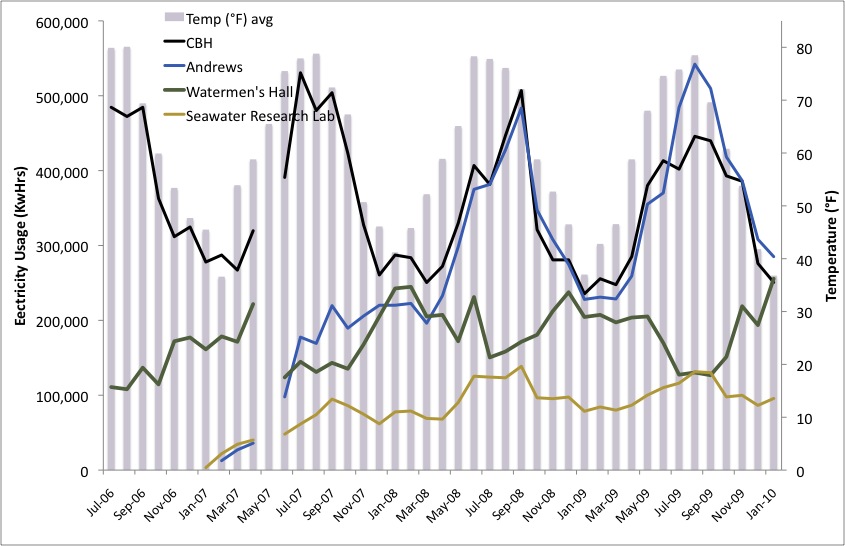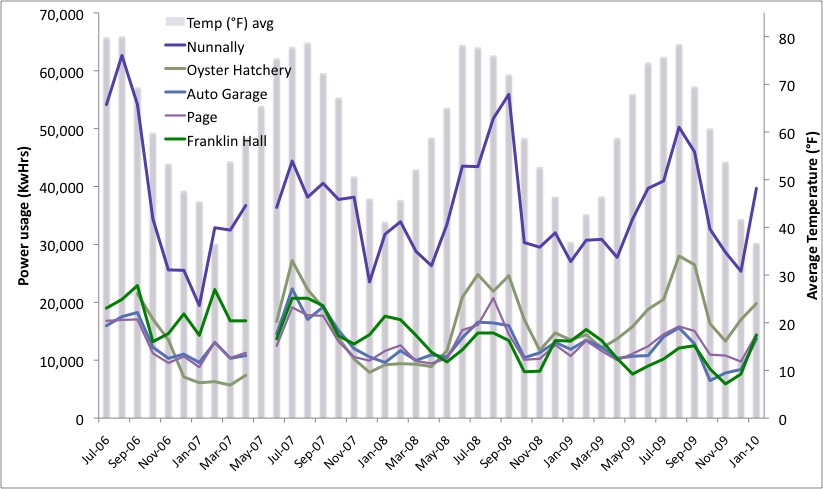Electricity Usage at VIMS
One
of the first steps in becoming greener is to quantify what is driving
the most energy intensive processes. As a start to this, the
Green Team has collected information on electricity usage by building
by month for the entire VIMS campus. Average air temperatures (as
determined from the York River buoy) were added to the chart for a
comparison. We are hoping that this could provide useful metrics
for targeting efficiency efforts and track the success of those
efforts. University administrators are eager for this information
not only for environmental reasons, but they are also looking for ways
to lower costs across the campus.
While the usage at first
appears to be quite high as compared to similar sized office buildings,
it is important to keep in mind that many buildings require large loads
due to the nature of the laboratory equipment inside. Mass
spectrometers and gas chromatographs and the like are critical
instruments in the pursuit of scientific knowledge. We are
working on ways to lessen the impact of all the support structures
needed to maintain our world-class research programs.
The two figures below chart the top 10 buildings by electricity usage
for since June 2008. For a complete list of
all buildings on campus and their usage, see the supplemental table.

Salient points from initial analysis are that summer air conditioning drives a significant load above the baseline. The Green Team is working with university administrators to target opportunities for both changes in how energy is used and also making some initial investments to improve building efficiency.

Interesting to notice in figure 2 what buildings are on the list, including a few buildings that (in the time period shown) were empty and waiting to be torn down.
For more specifics on the buildings and their specific electricity usage, please refer to the supplemental table. Monthly updates to track the
usage from beyond March 2009 will be made as soon as the information
becomes available.
A proposal to the Committee
on
Sustainability to use motion-sensor lights has recently been
accepted. There is an ongoing education campaign to turn off
lights, close hoods, and turn off screen savers as little ways that
everyone can contribute to energy efficiency.
We have recently posted similar information on propane gas and water usage.
